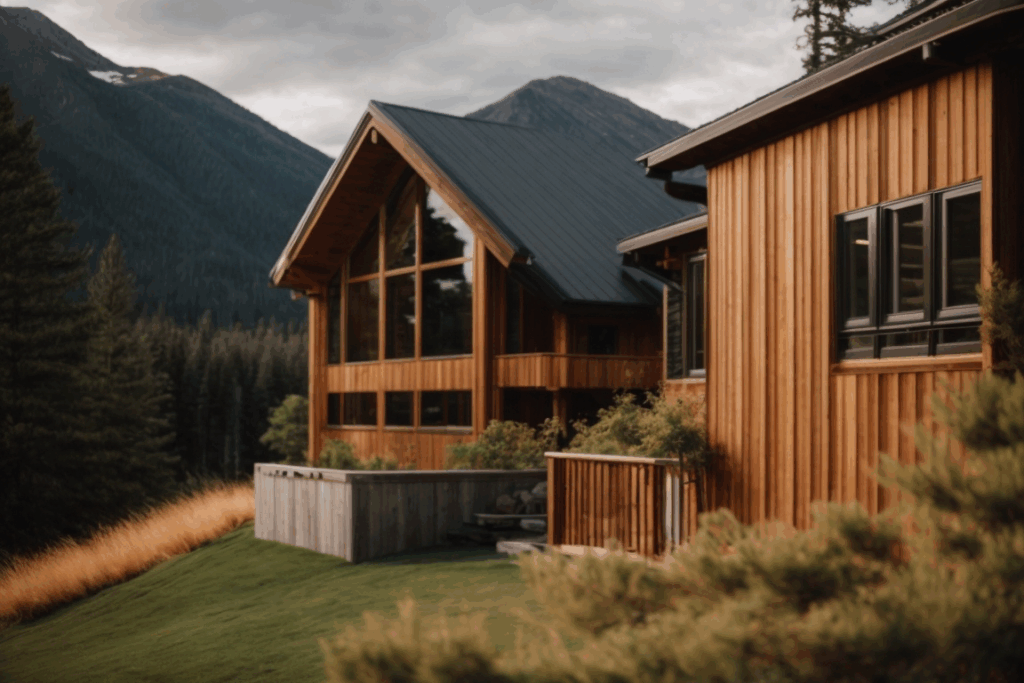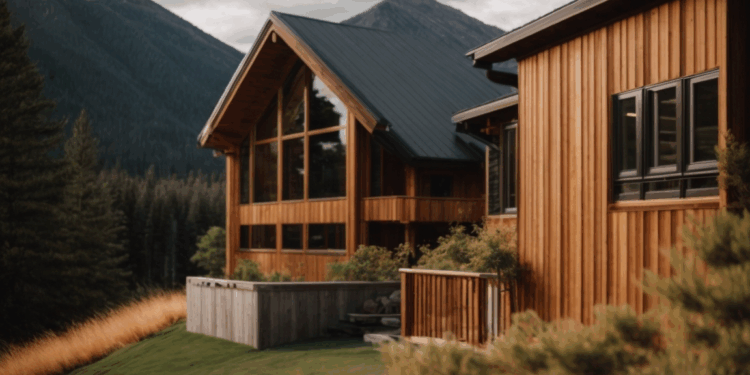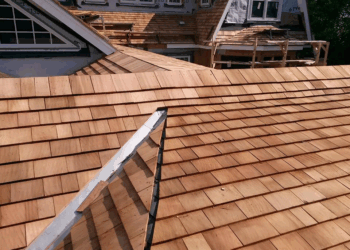
Embark on a journey through the realm of cedar outdoor siding, where the beauty of nature meets the practicality of home improvement. From its durability to its aesthetic charm, cedar siding offers a multitude of benefits that are worth discovering.
As we delve deeper, we will uncover the different types of cedar siding, the installation process, and essential maintenance tips to keep your cedar siding looking pristine for years to come.
Benefits of Cedar Outdoor Siding
Cedar outdoor siding offers a range of benefits that make it a popular choice for homeowners looking for durability, natural resistance, energy efficiency, and aesthetic appeal in their exterior cladding.
Durability of Cedar Siding
Cedar is known for its exceptional durability, outlasting many other materials commonly used for siding. Its natural oils act as a preservative, protecting the wood from rot and decay, even in harsh weather conditions.
Natural Resistance to Insects and Decay
One of the key advantages of cedar siding is its natural resistance to insects like termites and decay-causing fungi. This resistance reduces the need for chemical treatments, making cedar a more environmentally friendly option.
Insulating Properties for Energy Efficiency
Cedar siding provides excellent insulation, helping to regulate indoor temperatures and reduce energy costs. Its natural thermal properties make it an energy-efficient choice for homeowners looking to improve the sustainability of their homes.
Aesthetic Appeal and Weathering
Over time, cedar siding weathers to a beautiful silvery-gray patina, adding a rustic charm to any home. The natural variations in color and texture give cedar siding a timeless and elegant look that enhances the overall curb appeal of the property.
Types of Cedar Siding
When it comes to cedar siding, there are several types available, each with its own unique characteristics and benefits. Let’s take a closer look at the different options to help you make an informed decision for your outdoor space.
Cedar Shakes
Cedar shakes are hand-split from logs and have a rustic, textured appearance. They are thicker than shingles, providing better insulation. Installation can be more labor-intensive due to their irregular shape, but they offer a timeless look that many homeowners love.
Cedar shakes are a popular choice for cabins, cottages, and other rustic-style homes.
Cedar Shingles
Cedar shingles are machine-cut and have a smoother, more uniform appearance compared to shakes. They are thinner and lighter, making them easier to install. Cedar shingles are versatile and can be stained or painted to achieve different looks. They are a great option for traditional and modern homes alike.
Cedar Clapboard
Cedar clapboard, also known as bevel siding, is a popular choice for its classic look and durability. These boards are installed horizontally with one edge thicker than the other, creating a distinctive shadow line. Cedar clapboard is available in different profiles, such as smooth or rough-sawn, to suit various architectural styles.
Cost Comparison
In terms of cost, cedar shakes are usually the most expensive option due to the labor-intensive manufacturing process. Cedar shingles are a more affordable alternative, while cedar clapboard falls somewhere in between. It’s essential to consider your budget and desired aesthetic when choosing the right type of cedar siding for your project.
Maintenance Requirements
All types of cedar siding require regular maintenance to preserve their natural beauty and protect against weathering. This includes periodic cleaning, staining, or sealing to prevent moisture damage and UV exposure. Proper maintenance can extend the lifespan of your cedar siding and keep it looking great for years to come.
Installation Process for Cedar Outdoor Siding
When it comes to installing cedar outdoor siding, there are several key steps to follow to ensure a successful and long-lasting installation. From preparing the exterior to finishing touches, each step plays a crucial role in the overall outcome of the project.To begin the installation process, it is essential to properly prepare the exterior of the building.
This involves removing any existing siding, repairing any damaged areas, and ensuring a clean and smooth surface for the cedar siding to be applied.
Measuring and Cutting Cedar Siding
- Measure the area where the siding will be installed carefully to ensure accurate cuts and a precise fit.
- Use a circular saw or a miter saw to cut the cedar siding to the correct dimensions, making sure to wear protective gear such as goggles and gloves.
- Double-check measurements before cutting to avoid errors and minimize waste.
Installation Methods
- Horizontal Application: Cedar siding can be installed horizontally, which is a common method that provides a traditional look.
- Vertical Application: Alternatively, cedar siding can be installed vertically, offering a modern and unique aesthetic to the exterior of a building.
- Follow manufacturer guidelines and recommendations for the specific installation method chosen.
Sealing and Finishing
- Apply a high-quality wood sealant or finish to the cedar siding after installation to protect it from moisture, UV rays, and other elements.
- Regularly maintain and reapply sealant as needed to prolong the lifespan of the cedar siding and maintain its appearance.
- Consider staining or painting the cedar siding for added protection and customization, following best practices for wood finishing.
Maintenance and Care of Cedar Siding
When it comes to maintaining cedar siding, proper care is essential to ensure its longevity and aesthetic appeal. Regular maintenance can help prevent damage and preserve the natural beauty of the wood.
Effective Cleaning Techniques
- Regularly clean cedar siding with a mixture of mild soap and water to remove dirt, dust, and grime without damaging the wood.
- Use a soft-bristled brush or cloth to gently scrub the surface, avoiding harsh chemicals or abrasive materials that can strip the natural oils of the cedar.
- Rinse thoroughly with clean water after cleaning to prevent soap residue from accumulating on the wood.
Importance of Regular Inspections
- Inspect cedar siding periodically for signs of damage, such as cracks, splits, or warping, which can indicate potential issues that need to be addressed.
- Check for any areas where water may be pooling or leaking, as moisture can lead to mold growth and wood rot if left unchecked.
- Address any damage promptly to prevent further deterioration and maintain the structural integrity of the siding.
Dealing with Mold or Mildew
- If mold or mildew develops on cedar siding, mix a solution of water and mildew cleaner to gently scrub the affected areas.
- Rinse thoroughly and allow the siding to dry completely to prevent mold from returning.
- Consider applying a fungicidal wash to prevent future mold growth and protect the wood from moisture damage.
Preserving Natural Color and Finish
- Apply a quality sealant or stain to cedar siding to protect it from UV rays, moisture, and other elements that can cause discoloration or fading.
- Regularly reapply sealant or stain as needed to maintain the color and finish of the wood and extend its lifespan.
- Avoid using oil-based finishes that can trap moisture and lead to premature deterioration of the cedar siding.
Final Review
In conclusion, cedar outdoor siding stands as a timeless choice for homeowners seeking both functionality and elegance in their exterior design. With its natural resistance, versatility, and easy maintenance, cedar siding proves to be a top contender in the world of outdoor home decor.
Helpful Answers
Is cedar siding resistant to insects and decay?
Yes, cedar is naturally resistant to both insects and decay, making it a preferred choice for outdoor siding.
What are the different types of cedar siding available?
The various types include shakes, shingles, and clapboard, each with its unique characteristics in appearance and installation.
How should cedar siding be maintained to preserve its natural color?
Regular cleaning and inspections, along with proper sealing and finishing, are key to maintaining the natural color and finish of cedar siding.














